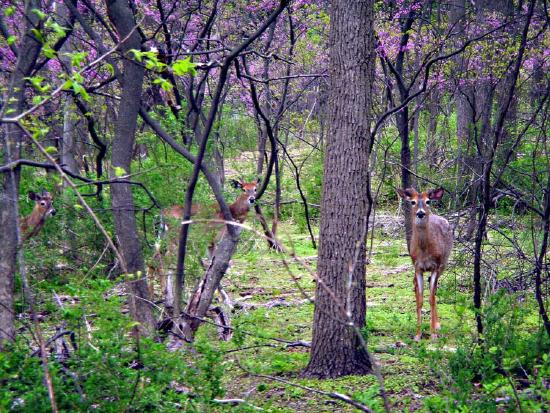1: Introduction to the Science of Wildlife Biology
( \newcommand{\kernel}{\mathrm{null}\,}\)

Figure 1.1: Image of Deer in Redbud Woods May,2005 Image courtesy of "History and Method", CC BY-SA 3.0, Wikipedia
What is wildlife biology, and how do we study it? What is "good" science? In this chapter, we'll learn about the scientific method, and how biologists use science to gather information and make decisions about wildlife species.
- Define wildlife biology, and explain why it is important to study and protect wildlife.
- List and explain the steps of the scientific method, emphasizing how hypothesis testing allows us to clarify relationships between organisms and their environment.
- Explain how controlled experiments are used to determine cause and effect.
- 1.1: Introduction to Wildlife Biology
- Wildlife biology is the study of vertebrates - mammals, birds, reptiles, and amphibians that are neither human nor domesticated. Fisheries (fish and other commercially important aquatic organisms) are often included in wildlife biology. The study not only includes the animals themselves, but also the resources and habitats they require to survive.
- 1.2: The Process of Science
- Scientific inquiry is how biologist gather information about living organisms. It is a standard set of methods that allow us to study the world around us in a careful, unbiased way. Information collected using the scientific method can be appreciated as basic science, or, we can apply that information to solve problems, create products, or serve the public.
- 1.3: Reporting and Evaluating Scientific Work
- In order to build our collective knowledge about the world around us, information gathered by scientific inquiry needs to be shared. To ensure quality, published information goes through a peer review process, in which other scientists in the field review and comment on the work. However, not all sources of information available to the public are peer reviewed, and as consumers of information, we need to understand how to evaluate those sources.

